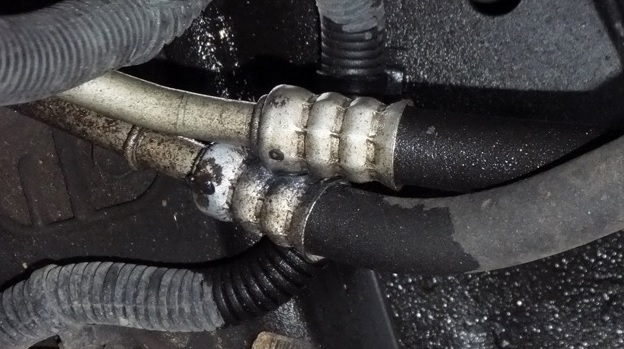Diagnosing power steering fluid leakage
Diagnosing power steering fluid leakage is performed when the oil level is lower than the prescribed minimum value during the check. When we have a lower fluid level in the reservoir, in addition to topping up, it is necessary to determine the cause of the loss of power steering fluid. The most common drop in fluid level is due to a leak.
When the power steering fluid level is lower than the minimum value, there is a risk of air entering the hydraulic part of the steering system. Air has a bad effect on the operation of the steering system, there is difficulty in starting the steering wheel and the possibility of serious malfunctions in some components of the servo system. Also, power steering fluid is highly flammable and if it gets on a hot engine or an exhaust system it can cause a fire. That is why it is necessary to discover and eliminate the cause of fluid loss and perform the procedure of bleeding the steering system
Diagnosing power steering fluid leakage
When a power steering fluid leak is suspected, with the ignition off, wipe the exterior of the power steering pump, reservoir, pressure hose, return hose, radiator, and steering gear. Then the engine is started and the steering wheel is turned to one side and the other several times. The engine is turned off and diagnosing power steering fluid leakage. It may be necessary to re-check for leaks after a period of driving. While diagnosing a power steering fluid leak, look at the hoses for signs of bloat. Always replace power steering hoses with the correct replacement hose. Never attempt to repair or seal a leak at a hose or fittings.
Another method uses standard fluorescent dyes. Following the instructions, the appropriate amount of paint is added to the reservoir of the power steering fluid. After the recommended driving time, all servo system components are inspected with an ultraviolet lamp, which will illuminate the fluorescent paint and make it easier to spot leaks.
To diagnose a power steering fluid leak, follow these steps:






